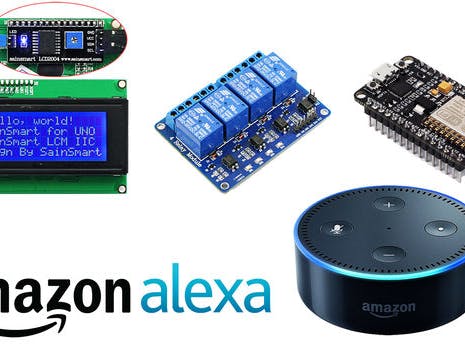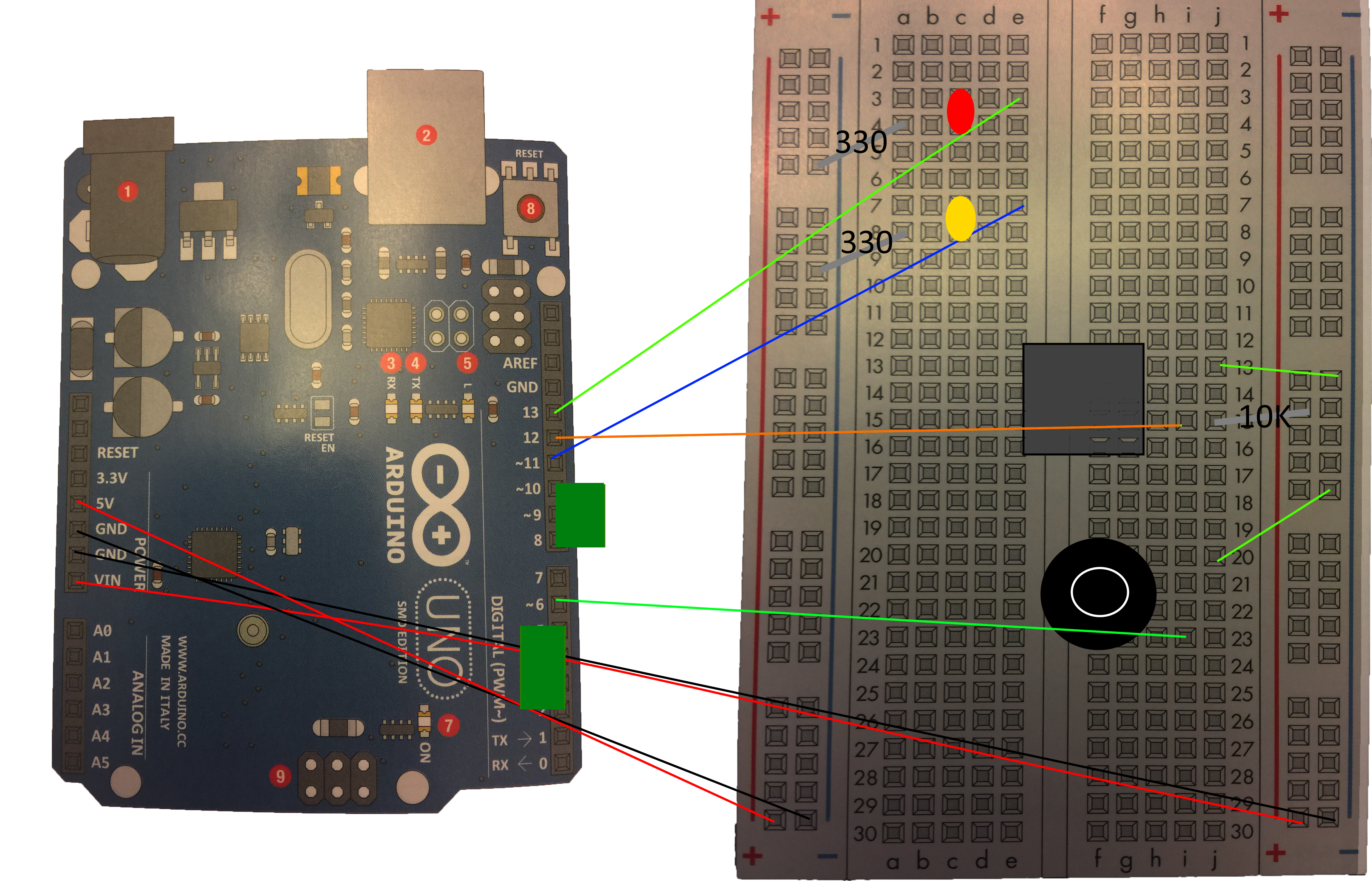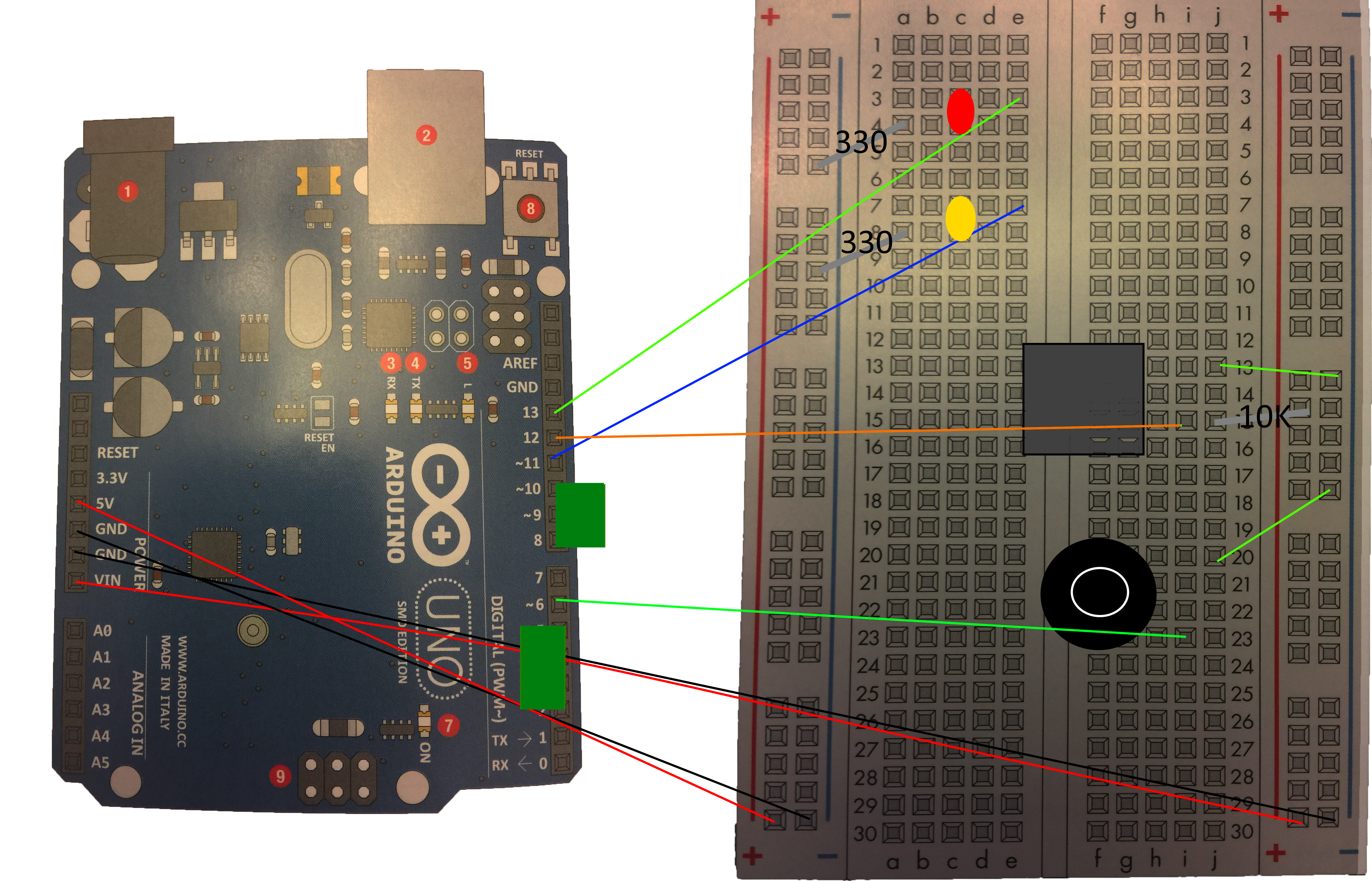#include "pitches.h"
#define GND 8
#define VCC 9
#define DATA 10
#define GND_R 5
#define VCC_R 2
#define DATA_R 4
#define button 12
#define buzzer 6
#define yellowled 11
int buttonState;
boolean recordedSignal[] = {1, 1, 0, 0, 1, 1, 0, 0, 1, 1, 0, 0, 1, 1, 0, 0, 1, 0, 0, 1, 1, 0, 0, 1, 0, 0, 1, 1, 0, 0, 1, 1, 0, 0, 1, 1, 0, 0, 1, 1, 0, 0, 1, 1, 0, 0, 1, 0, 0, 1, 1, 0, 0, 1, 0, 0, 1, 0, 0, 1, 0, 0, 1, 0, 0, 1, 1, 0, 0, 1, 1, 0, 0, 1, 1, 0, 0, 1, 0, 0, 1, 0, 0, 1, 1, 0, 0, 1, 0, 0, 1, 1, 0, 0, 1, 1, 0, 0, 1, 0, 0, 1, 1, 0, 1, 1, 0, 0, 1, 0, 0, 1, 1};
int melody[] = {
NOTE_C4, NOTE_G4, NOTE_A4, NOTE_A3, NOTE_B3, NOTE_D3, NOTE_D4,
NOTE_DS5, NOTE_E5, NOTE_FS5, 0, NOTE_B5, NOTE_E5, NOTE_DS5, NOTE_E5, NOTE_FS5, NOTE_B5, NOTE_DS6, NOTE_E6, NOTE_DS6, NOTE_AS5, NOTE_B5, 0,
NOTE_FS5, 0, NOTE_DS5, NOTE_E5, NOTE_FS5, 0, NOTE_B5, NOTE_CS6, NOTE_AS5, NOTE_B5, NOTE_CS6, NOTE_E6, NOTE_DS6, NOTE_E6, NOTE_CS6,
NOTE_E4, NOTE_F4, NOTE_G4, NOTE_G4, NOTE_G4, NOTE_CS4, NOTE_D4, NOTE_CS4, NOTE_B3, NOTE_B3, NOTE_CS4,
NOTE_D4, NOTE_D4, NOTE_CS4, NOTE_B3, NOTE_CS4, NOTE_DS4, NOTE_FS4, NOTE_GS4, NOTE_DS4, NOTE_FS4, NOTE_CS4, NOTE_DS4, NOTE_B3, NOTE_CS4, NOTE_B3,
NOTE_DS4, NOTE_FS4, NOTE_GS4, NOTE_DS4, NOTE_FS4, NOTE_CS4, NOTE_F4, NOTE_F4, NOTE_G4, NOTE_F4, NOTE_E4, NOTE_CS4, NOTE_B3, NOTE_CS4,
NOTE_D4, NOTE_B3, NOTE_CS4, NOTE_DS4, NOTE_FS4, NOTE_CS4, NOTE_D4, NOTE_CS4, NOTE_B3, NOTE_CS4, NOTE_B3, NOTE_CS4,
NOTE_FS4, NOTE_GS4, NOTE_D4, NOTE_DS4, NOTE_FS2, NOTE_CS4, NOTE_D4, NOTE_CS4, NOTE_B3, NOTE_B3, NOTE_CS4 };
// note durations: 4 = quarter note, 8 = eighth note, etc.:
int noteDurations[] = {
32, 32, 32, 32, 32, 32, 32, 32,
32,32,32,32,32,32,32,32,32,32,32,32,32,32,32,32,
32,32,32,32,32,32,32,32,32,32,32,32,32,32,32,
32,32,32,32,32,32,32,32,32,32,32,
32,32,32,32,32,32,32,32,32,32,32,32,32,32,32,
32,32,32,32,32,32,32,32,32,32,32,32,32,32,
32,32,32,32,32,32,32,32,32,32,32,32,
32,32,32,32,32,32,32,32,32,32,32
};
int randomNote;
void setup() {
// put your setup code here, to run once:
pinMode(GND, OUTPUT);
pinMode(VCC, OUTPUT);
pinMode(DATA, INPUT);
pinMode(13, OUTPUT);
// pinMode(buzzer, OUTPUT);
digitalWrite(GND, LOW);
digitalWrite(VCC, HIGH);
pinMode(GND_R, OUTPUT);
pinMode(VCC_R, OUTPUT);
pinMode(DATA_R, INPUT);
digitalWrite(GND_R, LOW);
digitalWrite(VCC_R, HIGH);
Serial.begin(115200);
pinMode(button, INPUT);
pinMode(yellowled, OUTPUT);
}
void loop() {
// put your main code here, to run repeatedly:
for (int i = 0; i < sizeof(recordedSignal) - 1; i++)
{
buttonState = digitalRead(button);
if (buttonState == LOW)
{
randomNote = random(101);
int noteDuration = 1000 / noteDurations[randomNote];
tone(6, melody[randomNote], noteDuration);
int pauseBetweenNotes = noteDuration * 1.30;
delay(pauseBetweenNotes);
digitalWrite(yellowled, HIGH);
Serial.print("Binary Value Transmitted: ");
Serial.print(digitalRead(DATA));
Serial.println();
digitalWrite(13, LOW);
digitalWrite(DATA, recordedSignal[i]);
delayMicroseconds(315);
digitalWrite(13, HIGH);
}
else {
digitalWrite(yellowled, LOW);
digitalWrite(13, LOW);
buttonState = 0;
}
}
delayMicroseconds(9000);
}

_ztBMuBhMHo.jpg?auto=compress%2Cformat&w=48&h=48&fit=fill&bg=ffffff)











Comments